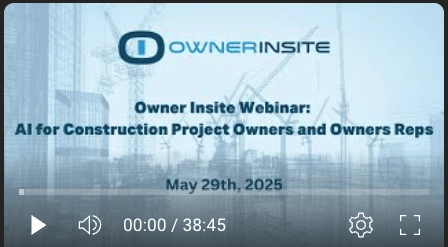5 Ways to Protect Your Investment and Your Sanity
The horror stories are out there, and they’re growing in number: skeletal buildings months behind schedule, subcontractors vanishing without warning, material shortages as sudden and unexpected as a horror movie jump scare. If it hasn’t happened to you yet, just wait . . . it will.
Or will it? The reality is that while challenges are inevitable, their impact on your construction project isn’t a foregone conclusion. We’ve identified the 5 most common reasons why building goes bad, along with some steps you can take to solve problems before they happen. This highlights the need for proper construction management to be established in the planning phase.
Issue #1: Poor Communication
Construction projects these days involve so many different stakeholders, all of whom have different project management styles, goals, and levels of accountability. These silos can often work at cross-purposes, jeopardizing deadlines and budgets.
Solution: It’s ultimately the owner’s responsibility to insist on clear communication protocols to ensure that everyone is on the same page at the same time. Find a construction management tool that gives you full visibility and provides structure for collaboration and accountability, especially when it comes to document control, processing questions, and getting timely responses to requests.
Issue #2: Inadequate Planning
As the old saying goes, “Failure to plan is just planning to fail.” Obviously, any construction project requires a tremendous amount of front-loaded planning. But have you done enough? If not, odds are that you’ll pay for it in time and money before the completion of the project.
Solution: Beyond creating an initial construction schedule and budget, do you have a process for regularly reviewing those initial assumptions? Have you established and updated contingency plans based on changing conditions? Your construction plan should be a living document, one that is both robust and flexible.
Issue #3: Bad Data
Poor data — or poorly communicated data — accounts for nearly 50% of rework on construction projects. What’s your data plan?
Solution: Whoever controls the data controls the project. As the owner, you need to be able to find accurate data on any aspect of the build, and you need to be able to do it quickly. Regularly reviewing key data sets to identify possible warning signs — only 20% of a line item’s budget being expended even though the schedule calls for that item to be 80% completed, for instance — can give you insight into what your contractor may not be telling you. Proper data management is part of your overall construction management plan.
Issue #4: Faulty Risk Management
From poorly written contracts to site safety hazards to managing change orders to issues with subcontractors and suppliers, risk is an unavoidable part of any project. Failure to appropriately manage your risk can result in ballooning costs, delayed schedules, and even litigation.
Solution: You can’t prevent risk, but you can mitigate it. Your project team and key stakeholders should regularly review current risk management efforts and identify any new issues that may arise in the foreseeable future. Rank both the probability and potential impact of each risk, which will allow you to prioritize which to tackle first. Review your list and decide whether to avoid, eliminate, reduce, transfer or accept each risk, then determine the time and resources needed. You’ll obviously want to focus more on mitigating a high-probability, high-impact risk than a low-probability, low-impact one.
Issue #5: Insufficient Documentation
Statistics show that nearly 1/3 of the initial data created during the design and construction phases is lost by project closeout. That startling figure results in a substantial loss of value after you take occupancy, often in the form of accidentally voided warranties.
Solution: Choose construction management software that not only makes it easy to document during the project, but that archives and organizes that data at closeout. More than anything, you as the project owner need to stay in control of your information, both during and after completion. Ensure that your contractor is contractually obligated to provide you with everything in a timely fashion. And review the litigation hold requirements for your state so you’re not blindsided in the event of legal action.
Good team practices are essential to keeping construction projects on track, but the right construction management software can be an invaluable tool for ensuring collaboration and accountability. To see if Owner Insite’s software might be a good fit for your needs at an affordable price, click here for more information.




